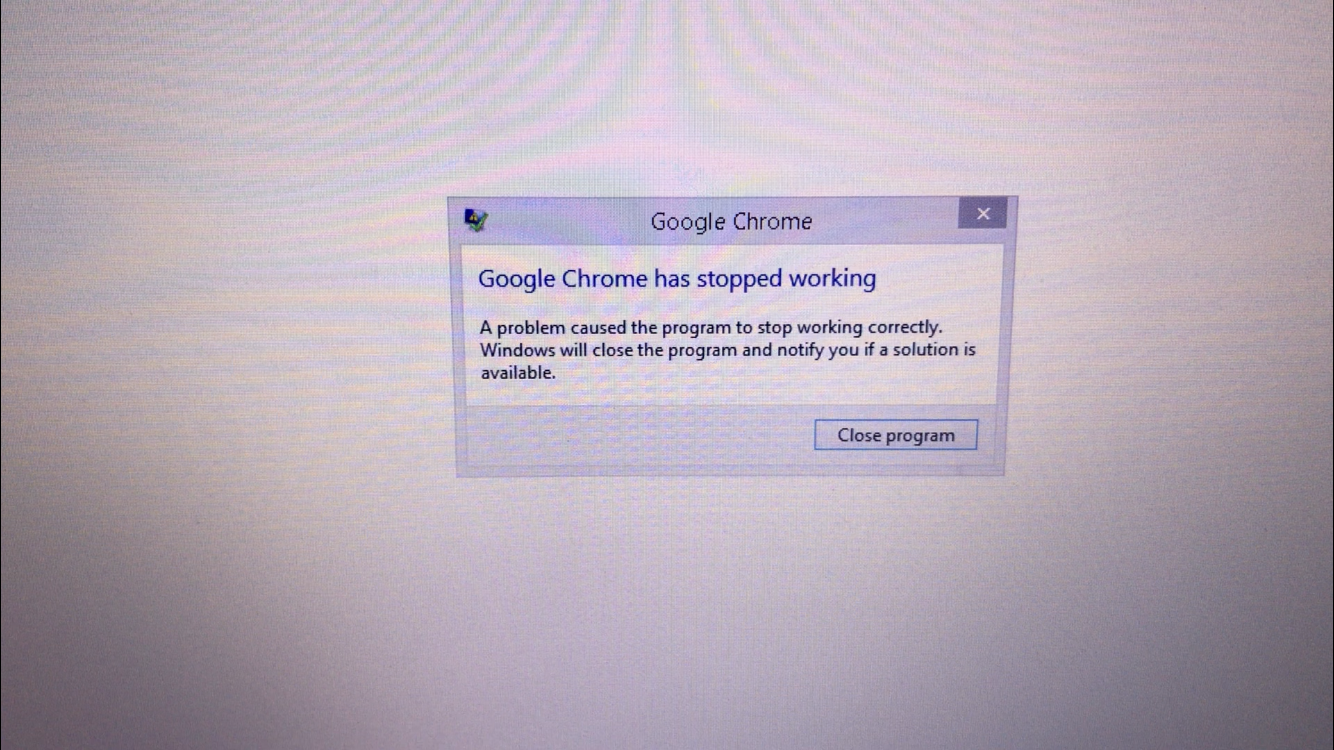
- #Google chrome crashing windows server 2012 upgrade#
- #Google chrome crashing windows server 2012 windows 10#
- #Google chrome crashing windows server 2012 windows 8#
Some of these crashes occurred in both Edge and Chrome, while others only happened in Edge. Most of them were caused by third-party modules, resulting in Edge failing to launch. A fix is also part of Profile Management 7.16.I have dealt with many Edge crash issues in my work. CUPM logs show "The process cannot access the file because it is being used by another process".Ĭitrix have released a private fix for this issue which causes Profile Management to retry copying ntuser.dat back to the store if the file is in use the first time.
#Google chrome crashing windows server 2012 windows 10#
Ntuser.dat is not copied to the profile store after logging off a Windows 10 VDA.
#Google chrome crashing windows server 2012 upgrade#
Upgrade to UPM 7.15 or as a workaround disable CEIP or contact Citrix for a private fix. The default browser fails to roam on Windows 10 and Windows Server 2016 using Citrix Profile Management 5.7.Ĭitrix Profile Management (UserProfileManager.exe) may crash every 7 days on 32-bit Windows machines. If you cannot upgrade yet, a workaround is to delete "Speech_OneCore=" from the UPM exclusion list (you are including it for synchronisation) and add "TileDataLayer" to the "Folders to mirror" policy setting.
#Google chrome crashing windows server 2012 windows 8#
On the other hand Windows 7 profiles are compatible with Windows Server 2008 R2 just as Windows 8 profiles are compatible with Windws Server 2012 for example.įile Type Associations fail to roam on Windows Server 2016 and Windows 10 using Citrix Profile Management. For example, machines running an OS that expect a v4 profile should not receive a v2 profile from Citrix Profile Management and so on.

It is therefore recommended that profiles covering different Operating Systems are maintained separately and not used across versions. The use of profiles across different versions of OS is not supported by Microsoft and may cause undesirable behaviour.

Users may experience profile corruption, slow logons or unexpected behaviour if using profiles from differing Windows versions as Roaming or UPM profiles. Alternatively you could disable the deletion of cached profiles on logoff if you did not need it.

Setting a value higher than 40 seconds is highly recommended. For workarounds, enable a delay before deleting the profile which may help to give whichever process is using NTUSER.DAT time to release any locks. Upgrade to Profile Management 5.7 which contains the fix. This can occur when using Windows 10 Redstone or Windows Server 2016.

Occasionally with "Delete locally cached profiles on logoff" configured NTUSER.DAT cannot be deleted. You must configure on a reference machine Internet Explorer to be the default program for HTTP/HTTPS, export the default associations and apply them to all sessions via Group Policy. When a hyperlink is clicked within Outlook users are asked "How do you want to open this type of link (http)?". You must add directories and files to the "Directories to Synchronize" and "Files to Synchronize" policy settings. Start Menu icons are not saving within the user profile. Upgrade to Windows 10 build 1703 (Creators Update/Redstone 2). The Start Menu can become unresponsive after several logons and logoffs on Windows Server 2016 RTM/Windows 10 RS1 when used with Profile Management. Applicable Product Versions Affected (if known)Ī bug in Profile Management 5.7 causes "userProfileManager.exe" to consume high memory.ĭisable Active Writeback for Registry or else upgrade to Profile Management 5.8 which contains the fix.


 0 kommentar(er)
0 kommentar(er)
